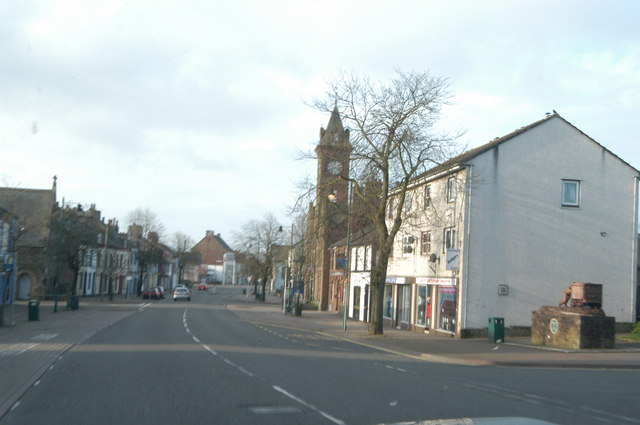Topics > Egremont > Egremont Parish, 1848
Egremont Parish, 1848
EGREMONT (St. Michael), a market-town and parish, in the union of Whitehaven, Allerdale ward above Derwent, W. division of Cumberland, 42½ miles (S.W. by S.) from Carlisle, and 293 (N.W. by N.) from London; containing 1,750 inhabitants. This place is of great antiquity, and the neighbourhood is supposed to have been the scene of various conflicts between the Saxons and the Danes. At the time of the Conquest, Ranulph de Meschines, to whom William had granted the whole county of Cumberland, gave the great barony of Copeland, now called the barony of Egremont, to his brother, William de Meschines, who erected his baronial castle on the site of an old Danish fort. The remains of this fortress, to the north-west of the town, though not extensive, exhibit traces of antiquity and strength, and consist chiefly of the gateway-tower, and vaulted entrance, of circular arches in the Norman style; portions of the outer wall, inclosing a quadrangular area; the postern; and three narrow gateways, communicating with the outworks. Near the ruins is a cairn of stones, called Woful Bank, which seems to have some reference to a battle fought prior to the Conquest.
The town is situated within less than three miles of the Irish Sea, and consists mainly of one spacious street; the houses are in general ancient, but many improvements have been recently effected, and a new bridge has been built over the river Echen. The clothing business appears to have been once carried on: the principal articles of manufacture at present are checks, linen, canvas, sailcloth, and paper; the tanning and dressing of leather prevail to a limited extent. In the parish are mines of ironstone, from which about 100 tons of ore are raised per day, and shipped at Whitehaven, for the supply of the iron-foundries of South Wales; limestone and red freestone are procured in the neighbourhood, and a considerable quantity of lime is burnt. The market is on Saturday, and is well supplied with corn. The fairs are on Feb. 18th for horses, the third Friday in May, and Sept. 18th for horned-cattle, sheep, &c.; on the three days following the last fair, a festival is celebrated, during which the inhabitants are allowed to sell ale without a licence: statute-fairs for hiring servants are held at Whitsuntide and Martinmas. The town was anciently a borough, and returned members to parliament in the 23rd of Edward I., but was, on its own petition, disfranchised in the 24th of the same reign: the burgesses possessed many other privileges, of which all records are lost. A borough serjeant, two bailiffs, four constables, two hedge and corn viewers, and assessors of damages, are appointed at the court leet of the lord of the manor, held in April, at which time a customary court is also held; a court baron is held every third Friday, for the recovery of debts under 40s. The living is a discharged rectory, valued in the king's books at £7. 12. 1., and in the patronage of the Wyndham family; net income, £249. The church is an ancient structure, of which the east end is in the early English style, and the remainder chiefly Norman; it has a low tower. There is a place of worship for Wesleyans.
Extract from: A Topographical Dictionary of England comprising the several counties, cities, boroughs, corporate and market towns, parishes, and townships..... 7th Edition, by Samuel Lewis, London, 1848.











